India and China warm up to each other. Russia could be the marriage-maker
RN Bhaskar
The last two months have been turbulent for India. In a way, this is a microcosm of what the world has witnessed during the past two years. Global events, and the US’ role as the prime instigator of adverse conditions, may have prompted India to reconsider its relationships. It has begun warming up to China.
Many indications
The first clear indication came in August 2024 through the latest Economic Survey that India should be seeking investments from China. “The Government’s Economic Survey 2023-24 dropped a political clanger by making a case that getting Foreign Direct Investment (FDI) from China could help India improve its participation in global supply chains through exports,” reports the Observer Research Foundation (https://www.orfonline.org/research/time-for-a-nuanced-debate-on-chinese-fdi).
Last week, S Jaishankar, India’s foreign minister, give the second indication when he stated (https://www.youtube.com/watch?v=o8R_Et_6_z8) that 75% of India’s disengagement issues with China had been resolved.
A third indication came on 12 September, when media reports (https://timesofindia.indiatimes.com/business/india-business/india-discusses-resuming-direct-flights-with-china/articleshow/113287499.cms) talked about Union Aviation Minister Rammohan Naidu meeting with his counterparts in China to discuss strengthening civil aviation ties, including daily flights between both countries.
This was followed by reports on September 13 (https://www.thehindu.com/news/national/wang-yi-ajit-doval-agree-to-work-for-improvement-of-bilateral-ties-chinese-foreign-ministry/article68637607.ece) that both countries had agreed to implement the consensus reached by the heads of the two countries, to enhance mutual understanding and trust, maintain continuous communication, and create conditions for boosting bilateral ties.
Clearly, India-China ties are on the upswing. And, once again, there is a good possibility that India, China and Russia will dance together. This is what this author had predicted in 2009 (https://www.livemint.com/Companies/OK3unHzCkEFqCkdTqj58eJ/The-Capitalist–India-and-China-may-hold-the-key-to-world.html). Similar views were expressed repeatedly, but more significantly in 2022 (https://asiaconverge.com/2022/10/geopolitics-bring-russia-india-china-closer/) when I said that “The Ukraine war will bind China and Russia more tightly to India”.
In some ways, India and China were always wealth generators through much of history in this world. They made their money through trade, not plunder, or exploitation. Trade records show that even in 800 BC, or even earlier, (Free subscription — https://bhaskarr.substack.com/p/how-south-india-bankrupted-the-roman?utm_source=publication-search), Indian traders would sail right up to China and purchase silk in exchange for sandalwood , pearls and spices. Indian traders took that silk and spices, and offered them to Rome in exchange for gold. China sold Romans its tea and silk using the old silk road. Both, especially India, bankrupted the empire depleting it of all its gold. If India too 55 million sesterces (each sesterces had 25-29 gm of gold) each year, amounting to around 1.375 tonnes annually, China took around 45 million sesterces, bringing the total out go of 100 million sesterces (https://www.youtube.com/watch?v=ibJJXeGyZxA&t=45s).
Such historical records, especially from Pliny the ender and Pliny the younger, were reinforced by research done by Angus Maddison. Maddison compiled all data relating to trades, and noted that India and China accounted for almost 70% of global trade and wealth generation.
But the tide turned against both countries with the advent of the printing press, and the industrial revolution. Together they allowed for the use of steam engines and widely circulated maps of the oceans and lands. That led to colonisation, which led to a precipitous fall in the fortunes of both nations. Both have begun to rediscover their old DNA. China has done this more successfully, trying to overcome what it calls its “century of shame”. India continues to bumble along, but has also rediscovered it ability to generate wealth.
The US will pull down the world
Watch the way other economic clusters are rapidly overtaking the G-7 group. With the US bleeding on account of the Ukraine war, and its reckless support to the massacre of the Palestinians (by providing weapons of destruction to Israel), it will remain the biggest cause for global disruption.
Already, the US has come under increasing attack for its constant attempt to support regime change (https://asiaconverge.com/2022/02/ukraine-the-war-that-usa-wants/). It has lost a great deal of political goodwill when it allowed Binyamin Netanyahu to address the US Congress even after his name was identified as being a war criminal.
The role the US has played in provoking a war in Europe by pushing NATO eastwards (https://asiaconverge.com/2022/03/the-ukraine-crisis-this-is-the-way-the-world-ends/) is by now quite well known. This is further buttressed by the leakage of the top-secret document penned by William Burns titled: “NYET means NYET” (https://wikileaks.org/plusd/cables/08MOSCOW265_a.html). Burns was then the US ambassador to Russia, and is currently director of the CIA. He warned the US in 2008 that any attempts to move NATO eastwards could trigger war between NATO and Russia (https://bhaskarr.substack.com/p/trade-and-currency-wars-move-centre?utm_source=publication-search). The US did not listen, and despite this damning evidence, it continues to claim that Russia’s advance to stop Ukraine from joining NATO was unprovoked.
Even the UN has not covered itself with glory, when it was quick to declare Russian leaders as war criminals, even while the warrants recommended against Middle East players remain unexecuted. Similarly, the UN has not declared George Bush as a war criminal, even though his actions involved using weapons of mass destruction (depleted uranium), aggression, invasion and the death of 655,000 people in Iraq (https://swap.stanford.edu/was/20100122183142/http:/www.washingtonpost.com/wp-dyn/content/article/2006/10/10/AR2006101001442.html). The US has all along claimed a death toll of just 35,000. But it refuses to have an independent audit of deaths in that country.
Because of the US’ misadventures, Europe is being devastated; it is almost on its knees.
Explaining India’s moves
India could have begun realising that little money will come in as foreign direct investments (FDI) from the West on account of two reasons.
First, understandably, the West does not want to invest in a country that does not allow for international arbitration (https://asiaconverge.com/2020/01/arbitration-and-investment-protection/) .
Second, with a debt of $34 trillion (Free subscription — https://open.substack.com/pub/bhaskarr/p/can-india-confront-the-world-of-debt?r=ni0hb&utm_campaign=post&utm_medium=web&showWelcomeOnShare=true) , the US is not likely to have funds for investment in India, especially because it will have to finance the wars in the Middle East and Ukraine. It has managed to conceal its debt, by allowing Israel to come up with bonds which are purchased by the US treasury, which in turn allows Israel to buy an ever-growing cache of arms. On the Ukraine front, the US will have to find some way to finance the reconstruction of a battered country. It will also have to finance the cost of additional arms that it wants Ukraine to have.
India, therefore, will have to look at the country which has the most investible funds. That is China. Secondly, it knows that a festering border dispute will only end up making India weaker. It does not desire becoming another Zelensky to play the US game of containing China.
Third, it is aware of how the BRICS and the ASEAN clusters are growing.
India is also aware of how the G-7 isn’t likely to fare well. This cluster comprises seven of the world’s advanced economies, including Canada, France, Germany, Italy, Japan, the United Kingdom, and the United States, (as well as the European Union).
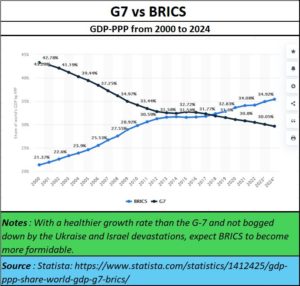 India also knows that when it comes to GDP-PPP, BRICS has been growing faster than the G-7. And this is when only the existing members of the BRICS grouping are considered. This group comprises Brazil, Russia, India, and China, added South Africa who were part of this group in 2011. In December 2023 Iran, Egypt, Ethiopia, and the United Arab Emirates also joined this group. Turkey and many other countries have also expressed their desire to join the BRICS group.
India also knows that when it comes to GDP-PPP, BRICS has been growing faster than the G-7. And this is when only the existing members of the BRICS grouping are considered. This group comprises Brazil, Russia, India, and China, added South Africa who were part of this group in 2011. In December 2023 Iran, Egypt, Ethiopia, and the United Arab Emirates also joined this group. Turkey and many other countries have also expressed their desire to join the BRICS group.
At the time of writing this article, there is a e BRICS summit underway in Moscow since 14 September, 2024 (https://www.aa.com.tr/en/europe/brics-media-summit-kicks-off-in-moscow/3329920#:~:text=BRICS%2C%20founded%20in%202009%20with,to%20keep%20the%20name%20BRICS). The media contingent alone has 120 foreign media executives from 60 outlets across 47 countries. As the website states, “The decision to host the media summit in Moscow was endorsed during a 2023 forum in Johannesburg, South Africa. . . . . In total, more than 150 attendees are expected at the Moscow event.
Once the membership swells, it will not be long before the BRICS decides to adopt several measures. One is the promotion of its own financial vehicle for global transactions. This would thus bypass the US backed SWIFT, which has increasingly been weaponised, causing immense discomfiture to the rest of the world.
A mechanism to settle trade disputes, which could lead to the formation of a parallel WTO is also being considered. After all, the US is the biggest disruptor of trade (https://bhaskarr.substack.com/p/global-fragmentation-new-alignments?r=ni0hb&utm_campaign=post&utm_medium=web&triedRedirect=true).
It is only a matter of time that even the UN and the ICJ may become relics because of their inability to play the honest broker.
Meanwhile the East continues to overwhelm the West. While the growth rates of the past two decades may not look impressive when compared with other clusters, there is something that India’s planners would not have overlooked.
The ASEAN countries sport the healthiest rates of population growth. With good education, improving standards of living, and a healthy population growth, expect this group to do even better, without even considering India and China.
This could be one reason why Russia too has been keen on seeing India and China work together so that its synergies with these two countries improve.
Russia’s population is small in percentage terms. Its land mass is huge. It has the largest reserves of gold, rare earths, and oil – but they are underground. It costs money and people to excavate them. Once relations between India and China improve, Russia could use India’s workforce (provided they are skilled) and investments from China. China needs the oil and mineral resources that China has. India needs the defence support, oil and employment support that Rusia offers. China needs India’s markets and its investment opportunities. India needs China’s money.
This complementariness will become hugely advantageous to all the three. What is missing is cordiality between India and China.
Finally, there could be one more reason why India has decided to move closer to China. The Bangladesh coup on 4 August this year, came as a shock to India. Sheikh Hasina was key to controlling the Islamist frenzy in that country. The new government under Mohammed Yunus is not likely to give Islamists a free hand, but revelations that the US wanted to set up a defence base in the Bay of Bengal (https://theprint.in/world/st-martins-in-bangladesh-the-tiny-island-that-hasina-has-accused-us-of-wanting-its-importance/2218803/) must have infuriated New Delhi. It believes that the Bay of Bengal comes under its sphere of influence.
With the US creating turmoil in India’s neighbourhood, could that have prompted New Delhi to mend fences with China?
Not that this will be easy. The US has a history of ruthless blackmail, as was articulated quite succinctly by Sergei Lavrov in March 2023, at the Raisina Hill dialogues in Delhi (See Lavrov quote from timeline 18:47 at https://www.youtube.com/watch?v=hiA8Ex9KQo4).
Remember the Maidan uprising in February 2014 (https://www.barrons.com/news/maidan-the-revolution-that-transformed-ukraine-13fdf1c4)? It was instigated by the US, as explained by both Jeffrey Sachs and John Mearsheimer in their talks. Both are famous experts on geo-politics. That revolt saw Zelensky replacing the former head who was more pro-Russia?
India is quite aware of the mischief that the US could play.
That is why New Delhi will move cautiously in its rapprochement with China.
Conclusion
But the writing is clear. Watch the power of BRICS grow as it becomes more relevant to the new world order than is emerging. Listen to the brilliant talk by Zhang Weiwei (https://www.youtube.com/watch?v=K_C3AEfo1F4) as he explains the basic difference between the moves of the US and China.
And watch the moves India makes in this minefield of extortion, regime change, and the promotion of wars.
The author is a senior journalist and researcher
=========================
Do watch my latest podcast at https://www.youtube.com/watch?v=QIfiZFMTR4Y
=====================================





























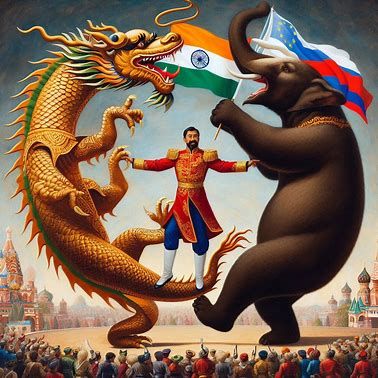
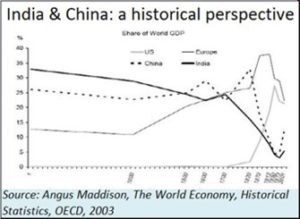
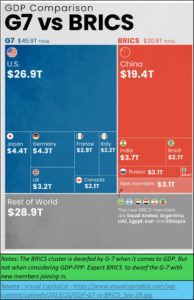
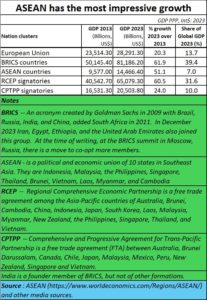








COMMENTS